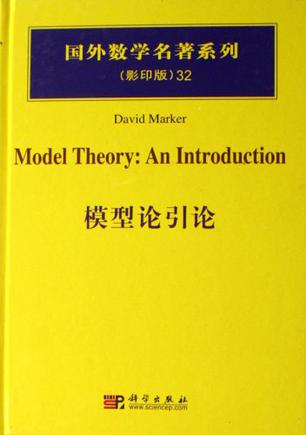-

Model Theory
This book is a modern introduction to model theory which stresses applications to algebra throughout the text. The first half of the book includes classical material on model construction techniques, type spaces, prime models, saturated models, countable models, and indiscernibles and their applications. The author also includes an introduction to stability theory beginning with Morley's Categoricity Theorem and concentrating on omega-stable theories. One significant aspect of this text is the inclusion of chapters on important topics not covered in other introductory texts, such as omega-stable groups and the geometry of strongly minimal sets. The author then goes on to illustrate how these ingredients are used in Hrushovski's applications to diophantine geometry. David Marker is Professor of Mathematics at the University of Illinois at Chicago. His main area of research involves mathematical logic and model theory, and their applications to algebra and geometry. This book was developed from a series of lectures given by the author at the Mathematical Sciences Research Institute in 1998. -

模型论引论
《模型论引论》以现代观点介绍模型论,着重强调其在代数学中的应用。前半部分包括模型构造技巧的经典论述,如类型空间,素模型,饱和模型,可数模型,不可辨元等理论及其应用。在书中后半部分,作者首先介绍莫利的范畴性定理,随之讨论定性理论,着重论述Ω-稳定性理论。最后,作者举例阐明了赫鲁索夫斯基如何将这些理论运用于丢番图几何。《模型论引论》显著特色之一是包含一些其他入门型教材所未涉及的重要论题,如Ω-稳定群和强级小集的几何学。 -

Model Theory
Model theory deals with a branch of mathematical logic showing connections between a formal language and its interpretations or models. This is the first and most successful textbook in logical model theory. Extensively updated and corrected in 1990 to accommodate developments in model theoretic methods — including classification theory and nonstandard analysis — the third edition added entirely new sections, exercises, and references. Each chapter introduces an individual method and discusses specific applications. Basic methods of constructing models include constants, elementary chains, Skolem functions, indiscernibles, ultraproducts, and special models. The final chapters present more advanced topics that feature a combination of several methods. This classic treatment covers most aspects of first-order model theory and many of its applications to algebra and set theory.